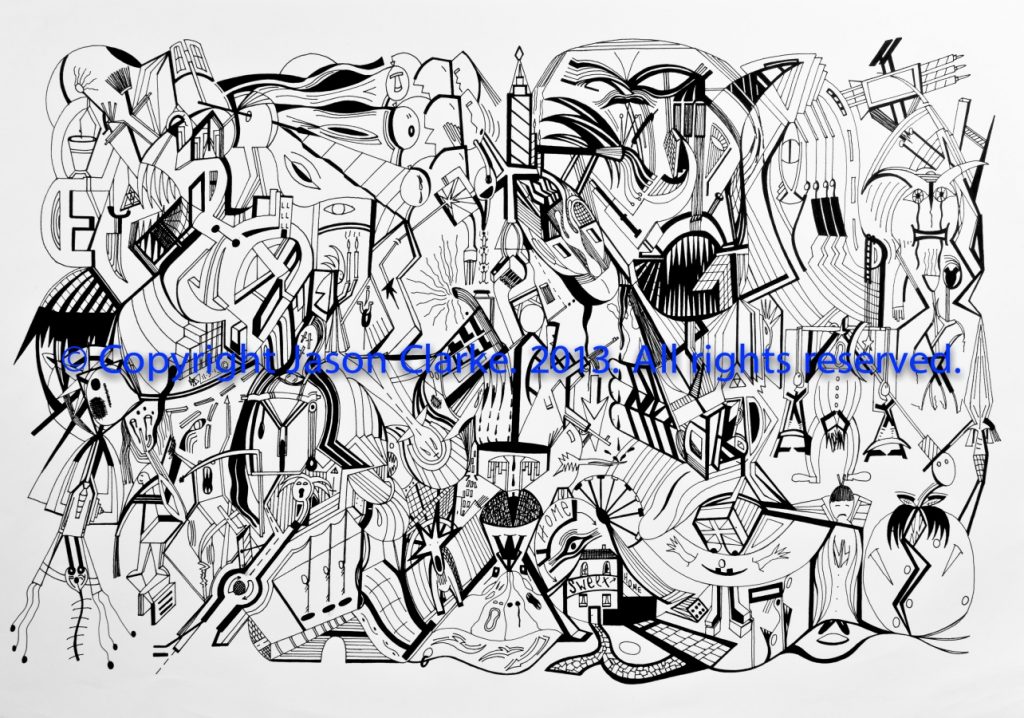Creative Therapy for Bipolar Disorder
I can’t tell you the value of art therapy to my recovery. Back in 2008 my workplace paid for me to have private medical treatment for my bipolar disorder. I was in and out of hospital four times that year. I received a timetable on admittance but I didn’t participate in anything initially due the severity of my illness. I reverted to basics focusing on eating, sleeping and taking medication but once I was at a level of stability to interact with others and focus on activities I was encouraged to get involved. 450 million people experience mental disorders around the world and I believe involvement in art therapies could be beneficial to all.
My Creative Therapy
There was a range of therapies available. Twice a week we had art therapy and about eight patients would gather in an art room full of color, paintings, crayons, art brushes and a paint splattered sink. Sometimes I sat there with my brain bursting with creative ideas. Our art therapist would guide us with inspirational images or themes but somehow whatever filled my head found its way onto paper. Other days I struggled to think of anything and the art therapist would talk to me and coax ideas based on my thoughts and feelings. Painting was a release. It was like turning a tap on and my artwork was the gush of water escaping, giving my head space to reflect. The art therapist always asked us towards the end what our creations meant and I often found myself exploring deep ideals about my happiness, pain, family, relationships and although it could be difficult for those thoughts to surface, I always felt relieved and left the room holding something I had created. It felt good.
Here are some examples of the artwork I produced. It’s interesting how the images reflect how changeable my moods were. At the time I was rapid cycling between mania and suicidal depression:
Jason's Experience With Art Therapy
I made some amazing friends in hospital and one person in particular was a man called Jason who was also experiencing his first major bipolar episode. He was older than me and very protective. I felt safe with him. Jason excelled at art. He used the same black pens every time and created intricate, enthralling and interesting pictures that reflected the light and shade of his moods. Some were haunting with very dark themes but every creation told a story and I loved to stare at them. He is now an accomplished artist regularly showcasing his work all over England. When asked how he feels about his artwork, he emphasizes the importance of art therapy and how it positively affected his life:
"I draw to clear my head. I have bipolar disorder and it shapes my life. Art helps me to manage my illness, it is an absolute necessity. If I was offered life without bipolar I would turn it down. It is who I am and without it there would be no art work. I started drawing while in hospital four years ago. Before this first admission my head was a ticking time bomb. I thought my life was normal. I thought the way I conducted myself and viewed others was normal. Once in hospital I unraveled, unable to cope as my illness worsened. I was introduced to different therapies and found that art helped me the most. It allowed me to focus, emptying my head of all the bad thoughts and visions weighing me down. I haven’t stopped drawing since.”
Here is an example of his artwork:

Types of Creative Therapy
There are of course many other expressive therapies including, music, drama, dance, movement and creative writing. I experienced most and loved all. In music therapy our therapist would bring in a stereo with a selection of CDs. Each of us would pick our favorite music tracks and listen to them. After a couple of weeks I asked to use my iPod with the speakers and played a moving, classical track that always made me feel emotional. It is easy to forget the beauty of such sounds and how they can evoke strong feelings when you are overwhelmed by an illness. The music interrupted our ruminating, negative thoughts and it was an escape from our daily struggles. For that hour we just listened and were transported into different worlds.
Next Page: Creative Writing, The Objective of Creative Therapy, The Development of Art Therapy

